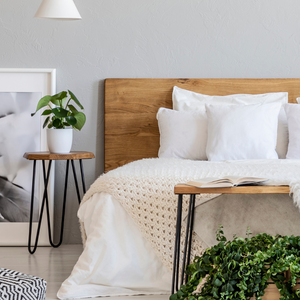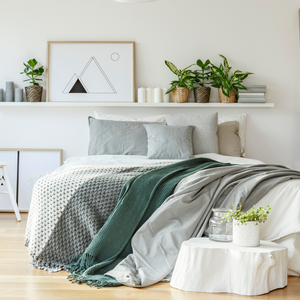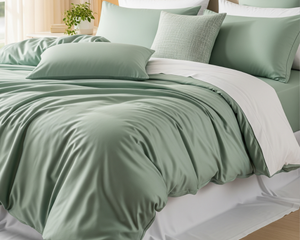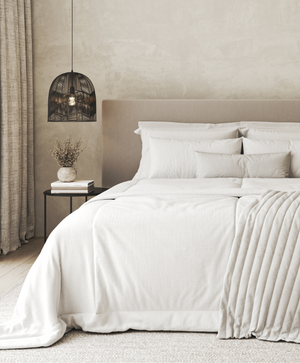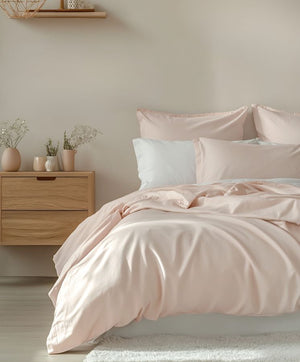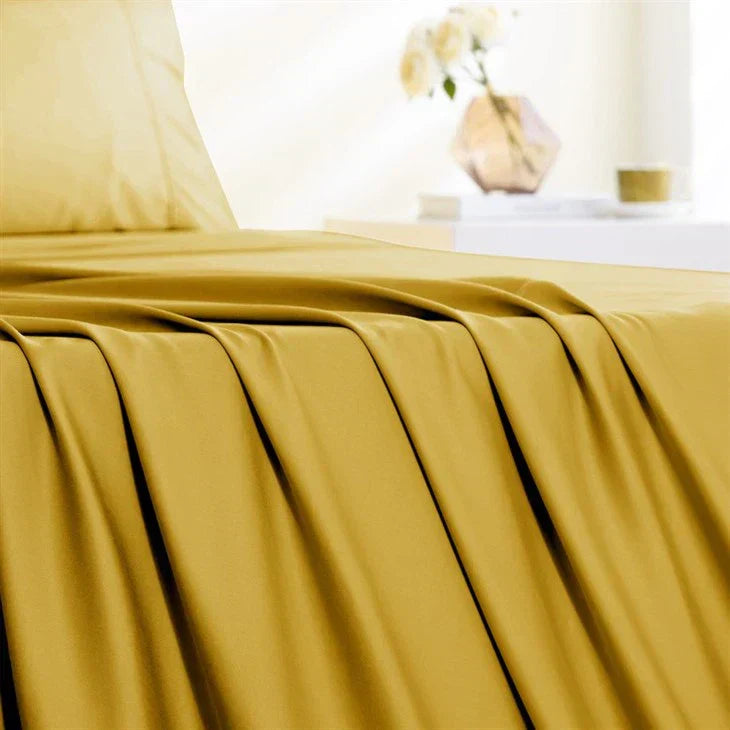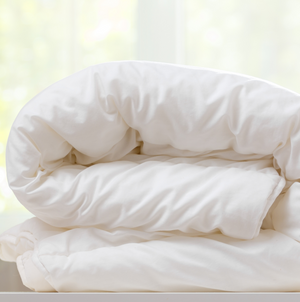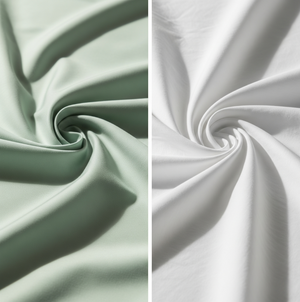Welcome to the wonderful (and sometimes overwhelming!) world of bedding! If you're new to understanding fabrics, it can feel like there's a secret language to learn. But don't worry, you're in the right place. Choosing the right material for your sheets and comforter is one of the most important decisions you'll make for your sleep quality, comfort, and even your skin.
At Verleu, we believe in mindful design, which starts with understanding the materials that touch your skin every night. Let's break down the best and worst fabrics to sleep on, so you can make an informed decision for your sleep sanctuary.
Why Fabric Matters So Much
Think about it: you spend roughly one-third of your life in bed. The fabric your bedding is made from directly impacts:
-
Temperature Regulation: Does it keep you cool or make you sweat?
-
Comfort & Feel: Is it soft, scratchy, crisp, or slippery?
-
Skin & Hair Health: Does it tug, pull, or allow your skin to breathe?
-
Durability & Care: How long will it last, and how easy is it to wash?
-
Allergen Protection: Does it resist dust mites and mold?
The Best Bedding Fabrics for a Dreamy Sleep
When it comes to top-tier sleep, these fabrics consistently outperform the rest:
-
Bamboo Lyocell: (Our Top Recommendation!)
-
Why it's the best: Bamboo Lyocell is a modern marvel. It's incredibly soft (often compared to silk or cashmere), breathable, and naturally thermoregulating, meaning it keeps you cool in heat and cozy in the cool. It wicks moisture away better than cotton, is naturally hypoallergenic, and incredibly durable. Plus, it's eco-friendly!
-
Feel: Silky-smooth, drapes beautifully, gentle on skin and hair.
-
Ideal for: Hot sleepers, sensitive skin, allergy sufferers, luxury seekers, year-round comfort.
-
-
Cotton:
-
Why it's great: As a classic bedding material, cotton is a safe and reliable choice. Its breathability and softness vary depending on the weave. For example, Percale is known for a cool, crisp feel, while Sateen has a smooth, soft, and slightly lustrous finish. It’s durable and generally gets softer with each wash.
-
Feel: Varies from cool and crisp (Percale) to soft and smooth (Sateen).
-
Ideal for: A wide range of sleepers depending on the weave, those who prioritize durability.
-
-
Linen:
-
Why it's great: Prized for its rustic charm and incredible durability, linen is highly breathable and becomes softer with every wash. It’s naturally moisture-wicking and excels in warm climates, offering a relaxed, lived-in aesthetic.
-
Feel: Textured, airy, initially a bit crisp but softens significantly.
-
Ideal for: Warm climates, those who love a natural, relaxed look, durability.
-
-
Silk:
-
Why it's great: The epitome of luxury, silk is famously smooth, soft, and naturally hypoallergenic. It’s excellent for skin and hair (reducing friction and preventing bedhead) and offers natural temperature regulation, feeling cool in summer and warm in winter. It has a beautiful sheen and drape.
-
Feel: Exceptionally smooth, soft, cool to the touch, luxurious.
-
Ideal for: Sensitive skin, hair health, luxury seekers, temperature regulation.
-
The Worst Bedding Fabrics (or those to use with caution!)
These fabrics can often lead to discomfort, skin issues, or poor sleep quality:
-
Polyester/Microfiber:
-
Why it's problematic: While often inexpensive and wrinkle-resistant, these synthetic materials are poor at breathability and moisture-wicking. They can trap heat and make you sweat, leading to an uncomfortable, clammy night's sleep. They can also feel coarse or slippery.
-
Feel: Can be soft but often lacks natural breathability; can feel clammy.
-
Avoid if: You're a hot sleeper, have sensitive skin, or prioritize breathability.
-
-
Flannel:
-
Why it's problematic: Flannel is wonderful for very cold winters due to its insulating properties. However, it can almost certainly lead to overheating and sweating, making it very uncomfortable for most of the year in temperate climates.
-
Feel: Fuzzy, warm, insulating.
-
Avoid if: You live in a warm climate or are a hot sleeper.
-
-
Low Thread Count, Rough Cottons:
-
Why it's problematic: Not all cotton is created equal. Very low thread count (below 200) cotton sheets can feel rough, scratchy, and lack durability. They might be cheap upfront but won't offer comfort or last long.
-
Feel: Coarse, stiff, uncomfortable.
-
Avoid if: You want comfort and durability.
-
Quick Comparison Chart: Best & Worst Bedding Fabrics
| Fabric | Best For | Worst For | Key Benefits |
|---|---|---|---|
| Bamboo Lyocell | Hot sleepers, allergies, luxury, year-round | (Almost none!) | Silky soft, highly breathable, moisture-wicking, hypoallergenic, durable |
| Cotton | Dependable, durability, a variety of feels | Can be hot if woven tightly, not as smooth as silk | Breathable, durable, familiar feel, available in different weaves |
| Linen | Warm climates, relaxed aesthetic, durability | Initial crispness, higher cost | Highly breathable, moisture-wicking, very durable, softens with age |
| Silk | Sensitive skin, hair health, luxury, temperature regulation | Higher cost, delicate care requirements | Exceptionally smooth, hypoallergenic, temperature regulating, great for skin/hair |
| Polyester/Microfiber | Budget-conscious (short-term) | Hot sleepers, sensitive skin, breathability | Inexpensive, wrinkle-resistant |
| Flannel | Very cold climates | Hot sleepers, warm climates | Very warm, cozy |
| Low TC Cotton | Very tight budget (short-term) | Comfort, durability, breathability | Inexpensive |
Making Your Best Choice Ultimately, the "best" fabric depends on your individual needs. However, if you're looking for an all-around winner that excels in comfort, health benefits, and temperature regulation, Bamboo Lyocell is truly outstanding. It’s an investment in your sleep that pays dividends every single night. We encourage you to explore our collection and experience the Verleu difference for yourself. Sweet dreams!
